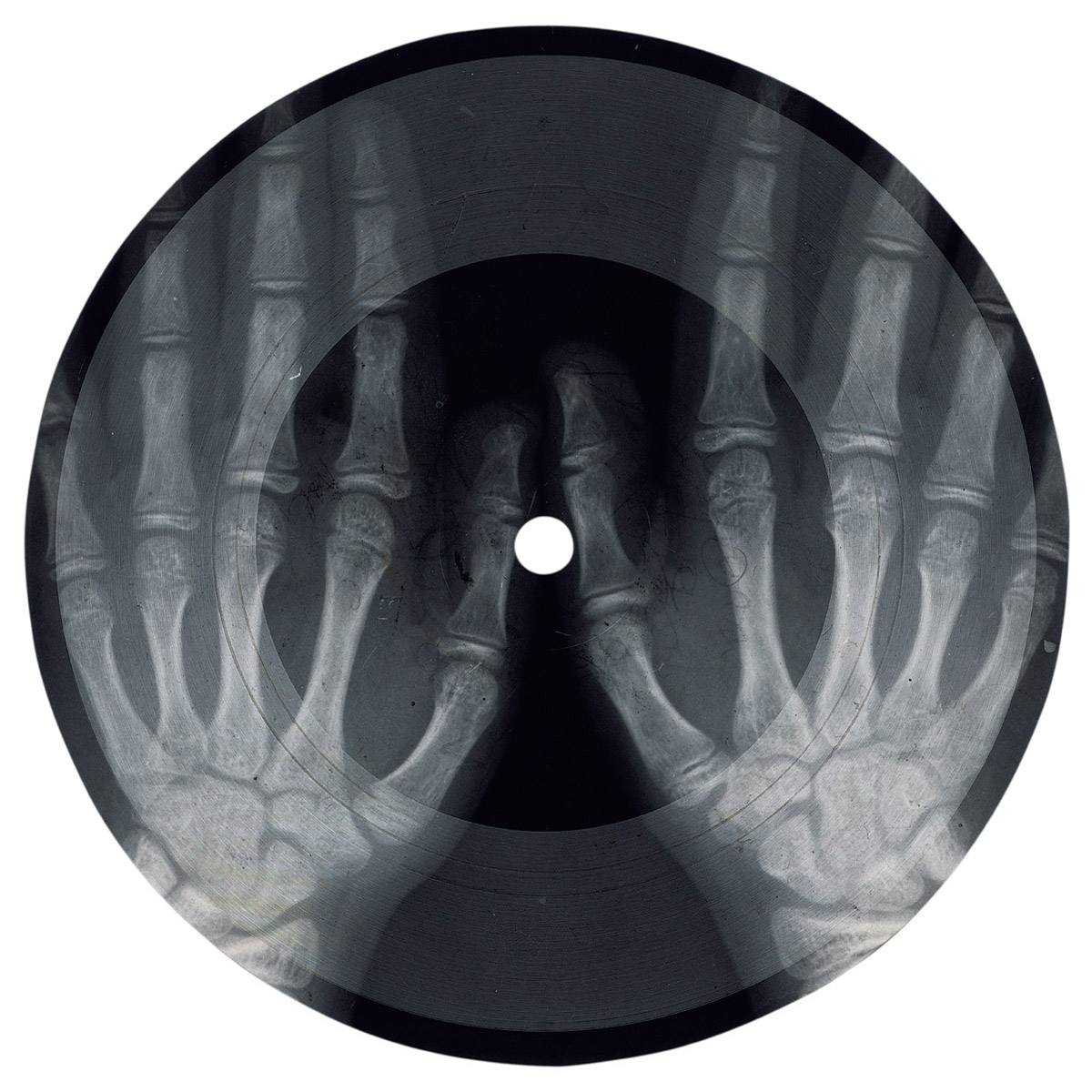Leftovers / Playing the X-Record
“Music on bones” and the transnational genealogies of dissidence
Eduardo Cadava and Xenia Vytuleva
“Leftovers” is a column that investigates the cultural significance of detritus.
Look around, the world is shimmering.
— Alexander Vvedensky, The Gray Notebook, ca. 1932
In recent years, globalization and transnational processes have destabilized conventional ways of reading culture, locality, and place. Although the mechanics of the visual and auditory aspects of dissident culture have been exhaustively mapped in the course of recent decades, its shadow narratives and improbable pasts are less well known. Dissident, material dispatches moving across borders bear the traces of variegated processes of diffusion within asymmetrical contexts. Among early attempts to transmit global ideals, a wonderfully rich case involves the Soviet dissident practice of illegally producing records on exposed X-ray films.[1]

“Music on bones”—as the practice, which began in the mid-1940s and lasted through the 1960s, was referred to in KGB documents and so-called anti-propaganda movies circulated by the government—was the only way to gain access to Western hits and, indeed, to some kinds of globalized cultural exchange. A master disc was pressed onto already-exposed, heated X-ray film—taken from hospital trashcans and medical archives—in order to make a crude phonographic recording whose barely visible grooves were etched on skulls, chest cavities, and spinal cords. No longer regarded as a medical document, no longer serving as a record of human physical identity, these exposed X-rays became the foundation of a new form of media, the abstract techno-basis of a new layer of “secret” and “precious” information. The Rolling Stones, the Beatles, and Elvis Presley, as well as jazz and foxtrot, were recorded on images of the interiors of Soviet bodies. Remarkably, the first examples served primarily as a means of personal escape, an “inner emigration,” by multiplying the forbidden copies of banned songs by the so-called white immigrants, such as Alexander Vertinsky, Leonid Utesov, and Pjotr Leschenko. Crossing both physical and political borders, this hybrid, mediatic form provided an opportunity for a parallel narrative—a kind of sidewalk or by-product—which became the means for accessing a different kind of cognitum and even for survival vis-à-vis the official regime.[2]
The technology itself, embodying and demonstrating a logic of material reuse and repurposing, activated a memory of others’ lives and invoked the progression from birth to death. With the postwar state program for fighting tuberculosis, fluorography became a routine, mandatory, nationwide procedure that produced a massive amount of X-ray waste that could now serve as a surface on which music could be “printed on ribs.” Whether damaged or in perfect condition, the grayscale translucent celluloid was no longer associated with lethal maladies, but rather with the everyday medical routines of Soviet citizens. Because of the extreme photochemical deterioration built into the medium, the exposed X-rays had to be stored in the dark and, indeed, they were to be found in the cellars of most medical institutions. The silvery black-and-white images were exceptionally vulnerable to heat, moisture, and harmful gases such as sulfur dioxide and nitrogen oxide—a common chemical mix in the air of modernized urban environments. At the same time, organic compounds such as gelatin, which contained the photographic emulsion, were susceptible to fungal growth in sealed storage areas. The physical impossibility of managing X-ray films in federal archives condemned them to be only short-term or “transit” documents. The recycling of the film provided a happy opportunity for hospitals and health institutions, which had been asked to eliminate chemically treated plates because they were so extremely fragile and flammable. Similarly, the active life of the newly constructed X-record was also locked into a particular temporality—the discs could really only be played five to ten times.